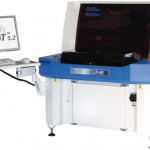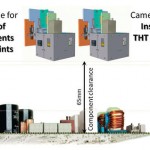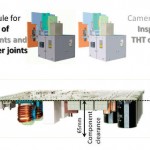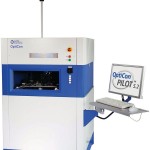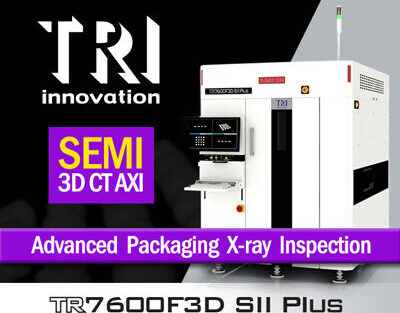In every respect, flexibility plays a critical role for electronic manufacturers and their system suppliers. It results in decisive competitive advantages as well as the opportunity to guarantee a stable order situation also in critical times by means of a wide range of technologies. Along the actual production systems, this applies the test technologies utilised in the production process. In particular AOI systems face great challenges in terms of different process technologies and a huge assembly and component range. The following article is to show opportunities in flexibly utilising AOI systems for various manufacturing technologies and PCBs.
Jens Kokott, Göpel electronic, Jena (Germany)
AOI systems are fully established and omnipresent in the SMD production process. Tasks such as presence check and solder joint inspection at ICs and chip components are standard functions basically guaranteed by all available AOI systems. But closer examinations of critical fault detection, false call rate, complementary test opportunities and test program generation reveal differences.
However, in a THT production process AOI systems are confronted with new challenges. System limitations occur not primarily by test tasks but changing framework conditions reasoned in PCB and component range. The table shows the changing requirements compared to the inspection of SMD assemblies.
SMD and THT assemblies tested in one AOI system
In particular, small and medium-sized service manufacturers demand AOI system utilisations for wide product ranges. In addition to SMD assembly testing, THT assemblies must be inspected in regards to appropriate mounting and soldering. For executing tests in various production process steps the usage of a stand-alone AOI system with manual loading provides a particularly high flexibility. The inspection of the soldered SMD PCB, THT components before and after the soldering process as well as the check of THT solder joints on the assembly bottom side are desirable. Because of the offline test process a manual PCB handling including. Flipping for THT solder joint inspection is assumed.
A corresponding configuration of the AOI system OptiCon BasicLine allows for implementing these requirements. A telecentric camera module featuring a 10.5µm resolution and providing a component clearance of 65mm is available for top and bottom SMD and THT solder joint inspection. The THT component check can be extended by an add-on camera module with a wide focal range of up to 60mm.
Thus, the so configured AOI system can be utilised for all tests within the production processes as listed below:
- 1.) SMD placement and soldering of PCB top side
- 2.) AOI of PCB top side
- 3.) SMD placement and soldering of PCB bottom side
- 4.) AOI of PCB bottom side
- 5.) THT mounting
- 6.) AOI of THT mounting
- 7.) THT soldering
- 8.) AOI of THT soldering
AOI in the inline THT process
With regard to a coherent line integration, the utilisation of AOI systems in the THT line production results in the following demands:
- Transport and inspection of large assemblies with or without carrier
- Adaption to existing handling concepts (strap or accumulating roller transport)
- Carrier returns in the lower area of the AOI system
An AOI system utilisation for THT inspection in the interlinked production process additionally depends on its technological organisation. There is the opportunity to inspect components immediately after the manual mounting at respective work stations to correct faults in a “cold” repair process before PCB transportation to the next process step. The AOI system OptiCon THT-Line predestines especially for such an application, being operated either in through feed or with one-sided loading and unloading. The inclusion of readers for barcodes, 2D codes or RFID enables a gapless traceability as well as an automated program selection. That means, during inspection a batch size of “1” can be accommodated.
If the manufacturing process consists of a non-stop production line, an AOI system faces additional higher requirements due to inspection speed. Along with short inspection times, a 3-segment-band module (accumulation roller or belt drive) are useful for a cycle time optimised operation to execute loading and unloading cycles during the test run.
The OptiCon TurboLine AOI system, specially configured for the THT process, provides such opportunities, allowing for component inspection and solder joint inspection in one system without PCB flipping. In some respect, the system even surpasses some requirements due to clearance and inspection height shown in the table. Analogue OptiCon THT-Line, there is the opportunity for carrier return in the lower part of the AOI system.
Conclusion
The utilisation of stand-alone AOI system for SMD and THT inspection makes sense in a flexible production and test strategy for manufacturing small and medium-sized batches of PCBs with mixed components. Assemblies can be loaded in the AOI system manually after the respective process step in order to minimise possible repair costs by means of small control loops. However, the method places higher demands tot he applied AOI system.
Foremost within a pure inline THT production process are the primary inspection task, the seamless integration into the line concept as well as PCB identification and traceability. In each case, the company’s OptiCon series AOI system provide adjusted configuration opportunities for an efficient usage within the individual production process.
SMT Hybrid Packaging
Booth 6-410
Zusammenfassung
Der Artikel zeigt die Bedeutung von AOI-Systemen in der Elektronikfertigung, sowohl für die SMD-Fertigung als auch für THT-Bauteile. So kann die OptiCon-Serie so konfiguriert werden, dass die Inspektion von SMD- als auch THT-Bauteilen in einem System möglich ist.
L’article démonter l’importance des systèmes AOI dans la fabrication électronique, aussi bien pour la fabrication SMD que pour les pièces THT. La série OptiCon peut ainsi être configurée de telle manière que l’inspection des pièces SMD, mais aussi THT, soit possible dans un système.
Share:


